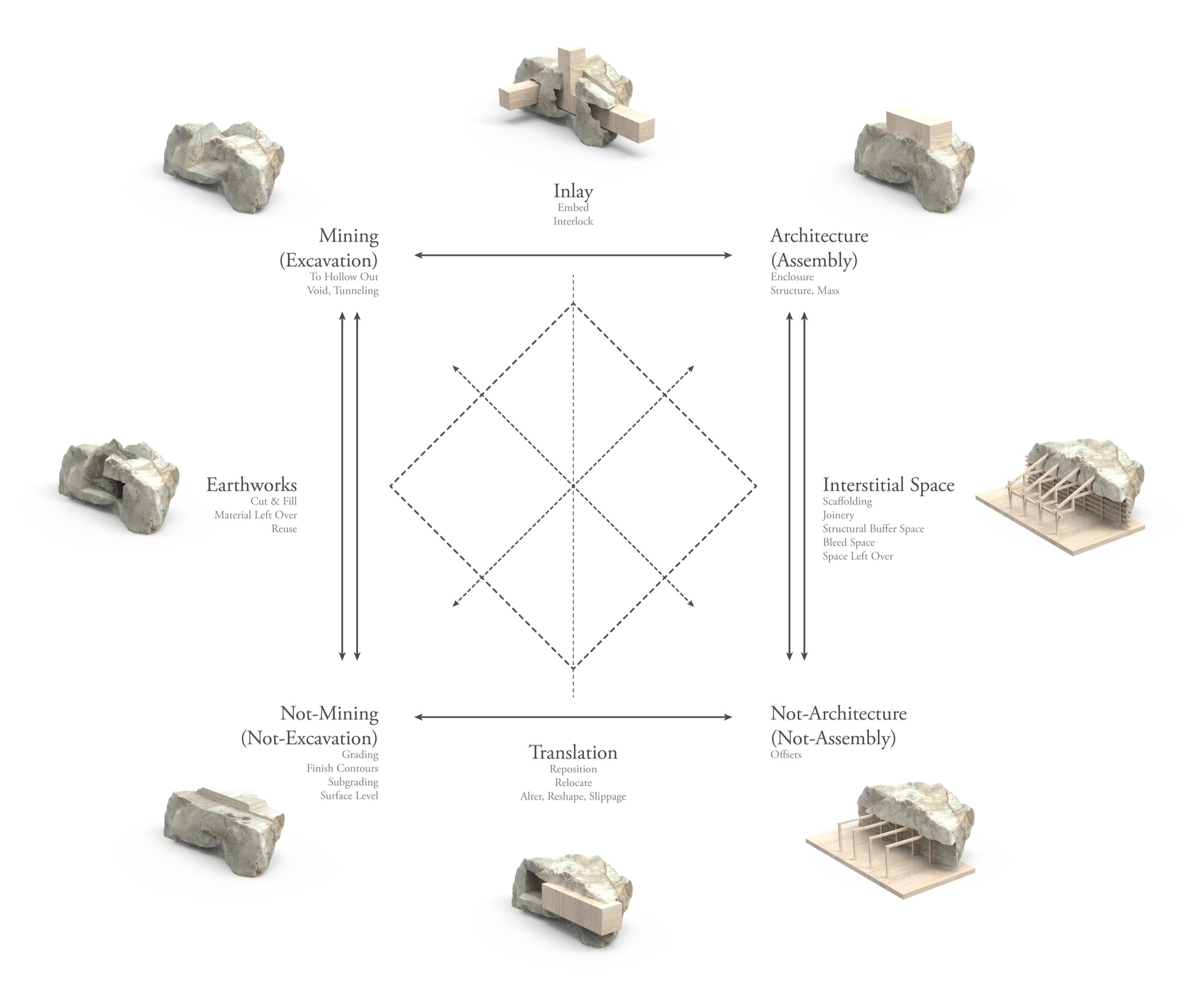Tectonic Inlay:
Spring 2021 | Semester VI | University of Pennsylvania
Research Studio with Homa Farjadi, Neda Mostafafi & Max Hsu
Collaborators: Christine Eichhorn
Publications: Nominated for Pressing Matters X
In Rosalind Krauss’s writing Passages in Modern Sculpture she utilizes the Klein diagram to propose a series of relationships between Architecture and Landscape. Tectonic Inlay frames itself around a spectrum of affiliations focused on the dichotomy between additive and subtractive methods of creation. Research investigating existing barns and mines led us to propose a design that investigates ways in which assembled structures embed, slip, and interlock within an excavated site. The architecture generates ambiguous, interstitial spaces, pushing the inversion of “exterior interiority”. This design research and methodology is applied to an artist in residence program, working with the temporary occupants to create a relationship with the various spaces. Perhaps best captured by the words of Krauss herself, the tension between interior and exterior - assembly and excavation - is expressed in the following. “The result is a sense of voluptuous reciprocity between the form of the container and that of the contained—the exterior mass cradling the void set at its center like a vital organ, and the shape of the void appearing as the key to the developed form of the whole.”
Rosalind E. Krauss, Passages in Modern Sculpture
As an introduction to this research project we began with an examination of the barn and ways in which voids and mass - addition and subtraction - work together to blur the edges between interior and exterior. An analysis at various scales took place, beginning with the macro level of the barn as a whole, working down to the minute details that create transformative elements. Through this analysis, an understanding of ambiguity and volume began to take shape and mold a design thread.
Inspired by Krauss and the Klein diagram, we created our own spectrum of affiliations centered around additive and subtractive methods of creation. Above you can see how these affiliations relate to one another and their manifestation within a volume. The process of creation held an important role in these affiliations as it became the driver of our design method. Below, and in the pages that follow, you can see how the method of excavation and assembly work in tandem, both limiting and driving the design methodology that creates tectonic inlay and its ambiguous interstitial spaces.
Seen below is an axonometric x-ray of the program in its entirety, showing the assembled structures embedded in the excavated voids. In the plans beneath, we can begin to see how these structures slip, and interlock within that excavated site. The clearances and radii of these voids follow the limitations of the machines used for digging, informing the design through the methods of creation. Programmatically, the dichotomy of voids and assemblies creates an unending result of spaces that can fit the needs of the occupants while encouraging interaction. By supplying these “neither” spaces, the volumes can be filled and adapted to the changing desires of the rotating artists in residence. An important element of our design was to ensure a non-hierarchical system. Neither the architecture or the excavation takes precedence over the other, but hold on to a constant push and pull of the two. The notion of “exterior interiority” and “interior exteriority” developed - allowing the outside in, the inside out, creating interstitial spaces.






